Introduction
Data transformation is a vital task for data analysts, enabling the extraction of valuable insights from raw data. One essential aspect of data transformation in Power BI is sorting data. This guide will explore how to sort data in Power BI using the Power Query Editor and DAX, with practical examples and script snippets, tailored for data analysts.
What is Sorting Data?
Sorting data involves arranging data in a specific order based on one or more columns. This technique is often used to organize data for easier analysis, such as sorting sales data by date or arranging product names alphabetically. Sorting data enhances data readability and helps in identifying trends and patterns.
Importance of Sorting Data
Sorting data allows data analysts to:
- Organize data for better readability and interpretation.
- Identify trends and patterns by arranging data in a logical order.
- Facilitate data analysis by providing a structured view of the dataset.
Step-by-Step Process for Sorting Data in Power BI
1. Loading Data into Power BI
Begin by loading your dataset into Power BI. You can import data from various sources such as Excel, SQL databases, and web data.
1. Open Power BI Desktop.

2. Click on Get Data from the Home ribbon.
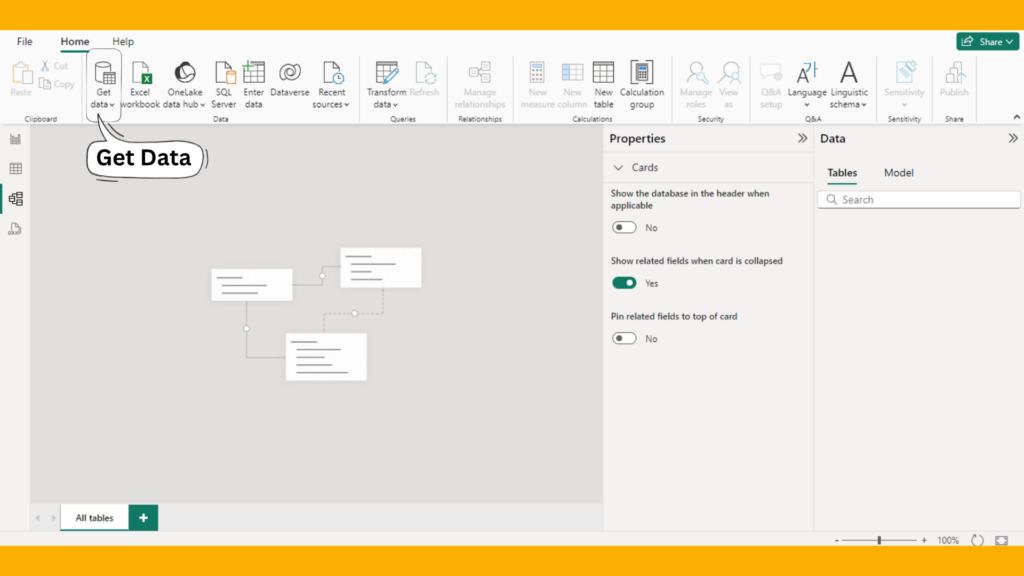
3. Select your data source and follow the prompts to load the data.
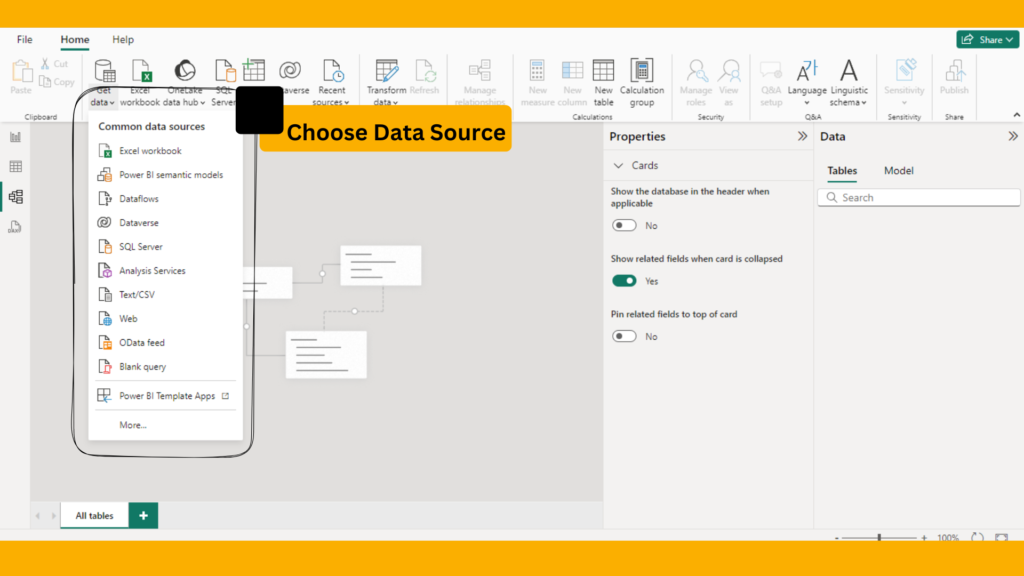
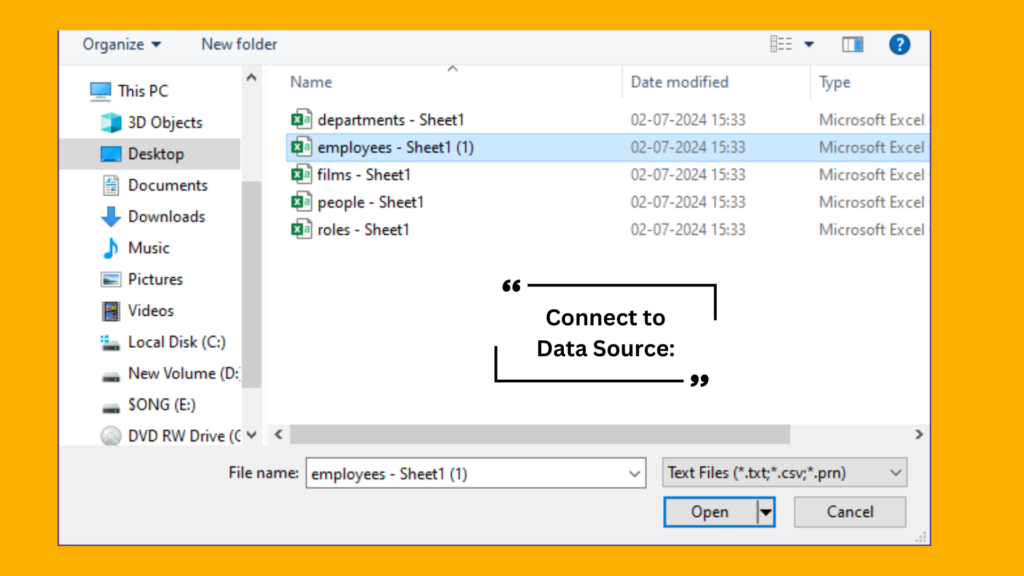

2. Opening the Power Query Editor
Once your data is loaded, access the Power Query Editor to start creating new columns.
- In Power BI Desktop, navigate to the Home tab.
- Click on Transform Data to open the Power Query Editor.
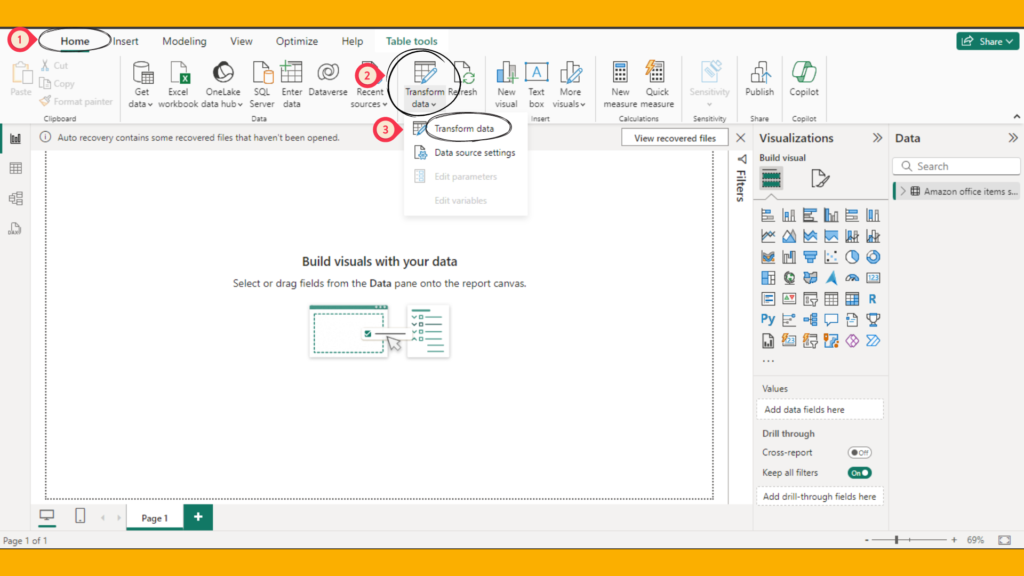
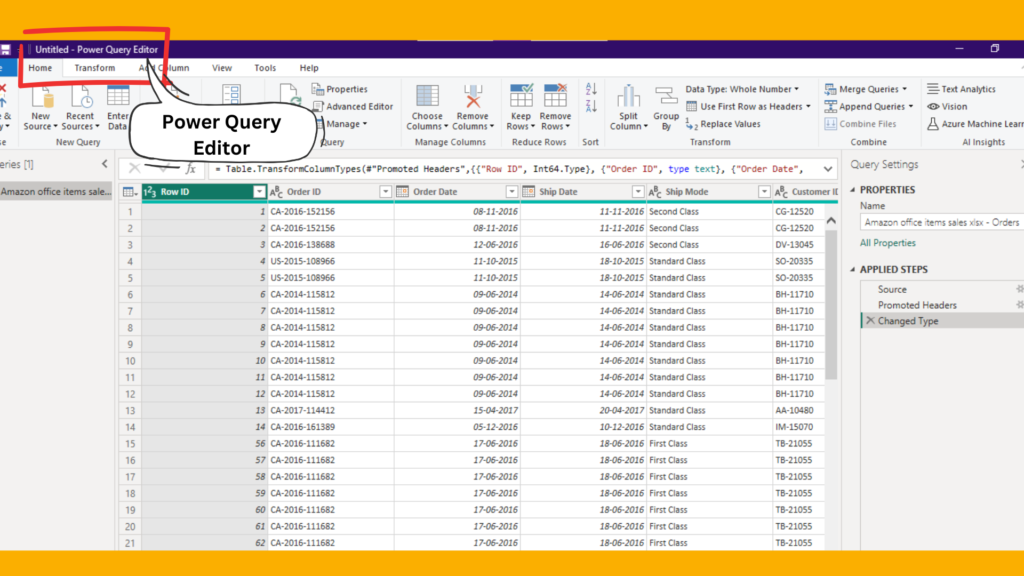
3. Sorting Data in Power Query Editor
In the Power Query Editor, you can sort data using various options and techniques.
1. In the home tab go to sort

2. select either sort ascending or descending according to the demand and column will be sorted.
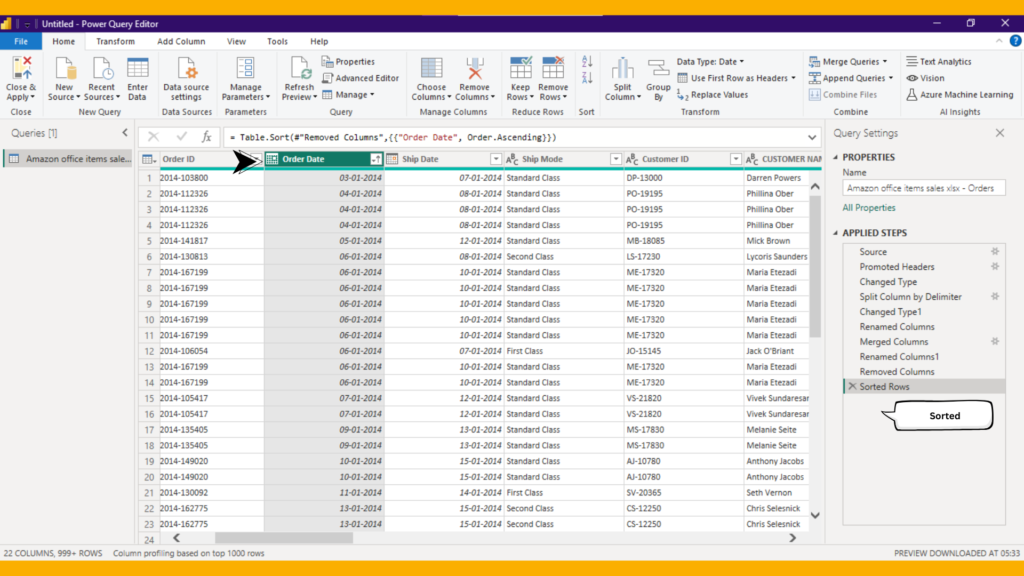
Example 1: Sorting Sales Data by Date
Suppose you have a sales dataset with columns Date and SalesAmount. You want to sort the data by Date in ascending order.
- In the Power Query Editor, select the column
Date. - Go to the Sort Ascending option in the column header.
4. Sorting Data by Multiple Columns
You can also sort data by multiple columns to achieve a more refined order.
Example 2: Sorting Sales Data by Date and Sales Amount
Assume you have columns Date and SalesAmount. You want to sort the data first by Date in ascending order and then by SalesAmount in descending order.
- In the Power Query Editor, select the column
Date. - Click on Sort Ascending.
- Then, select the column
SalesAmount. - Click on Sort Descending.
5. Using DAX for Sorting Data
In addition to the Power Query Editor, you can use DAX (Data Analysis Expressions) in Power BI to sort data, providing more flexibility and power.
Example 3: Creating a Sorted Column
Assume you have a column ProductName. You want to create a sorted column that ranks products alphabetically.
- In Power BI Desktop, go to the Modeling tab.
- Click on New Column.
- Enter the following DAX formula:
RankedProductName = RANKX(ALL('Table'), 'Table'[ProductName], , ASC)Conclusion
Sorting data in Power BI is a powerful technique for data analysts. Whether through the Power Query Editor or DAX, sorting data enables more readable and organized datasets, enhancing the overall data analysis process.
Frequently Asked Questions
Sorting data in the Power Query Editor is part of the data transformation process before loading data into the model, while using DAX in Power BI is done within the Data View after data is loaded, providing more flexibility for complex sorting requirements.
Yes, you can sort data by multiple columns in the Power Query Editor by selecting each column and specifying the sort order. This helps in achieving a more refined data order.
If you encounter errors when sorting data, check the following:
Ensure all referenced columns exist and have the correct data types.
Validate your sort expressions for syntax errors.
Use the Error and Query Dependencies views in the Power Query Editor to identify and resolve issues

